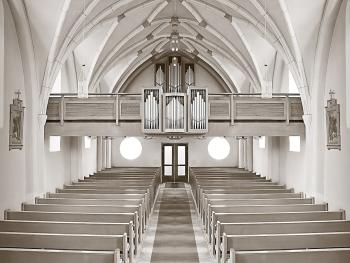As many pastors struggle with retaining members and growing them spiritually post-pandemic, new research from Making Space for Inspiration suggests opportunities for leaders to connect with current and new congregants, starting with a more intentional approach to the places they meet. This journal is the first in a three-part series created in partnership with Aspen Group exploring why church design matters in ministry.
One of the goals of this study was to assess respondents’ feelings surrounding space, starting with one’s perception of transcendence or connection to a higher power. This was especially important to consider in the wake of pandemic-era disruptions that have left many churches wondering about ideal environments for worship services.
The report defines a transcendent space as “a physical place that brings you closer to experiencing connection with something beyond the physical world.” More than half of U.S. adults (55 percent) say they do not regularly visit a space they consider transcendent. Self-identified Christians are slightly more likely to say they frequently visit transcendent spaces: 37 percent claim they do so regularly.
What makes a space transcendent? A sense of peace or calm (51 percent) tops the list for most Americans. Interestingly, no segment—including practicing Christians, who, by Barna’s definition, attend church regularly and say their faith is important to them—exceeds 50 percent in saying “an awareness of a greater power” makes a place transcendent.

In a world where we are more fragmented and disconnected from each other and meaningful experiences, it seems even more imperative that the spaces people inhabit, worship in, visit and rest in are places of peace and calm.
Many adults, especially Christians, say they feel peaceful when sitting in a Christian church. In fact, most Americans experience positive emotions when sitting in a church building, reporting they feel “peaceful” (47 percent), “connected to God” (42 percent), “safe” (40 percent), “welcomed” (39 percent), “comforted” and “hopeful” (37 percent each).
Despite their warm feelings towards these spaces, do Americans specifically label church buildings as a transcendent or spiritual places? Data show over half the general population (62 percent), and 89 percent of practicing Christians believe Christian churches are transcendent. For most U.S. adults, though, nature comes in first place (70 percent), alluding to the opportunity for church leaders to incorporate nature into their church design or ministry creatively.
The data show that there is ample opportunity for churches to become safe, inviting, welcoming spaces for all Americans, not just Christians. If pastors are open to making changes, the church building and the land it sits on can be used to solve some of the formative issues pastors are grappling with for their people today. Making Space for Inspiration points to some of the ways that can be done.
There’s nothing like the feeling of peace when you enter a church. As soon as you cross the threshold, the sense of God’s comfort envelopes your body, and you feel at home. However, pastors must be flexible enough to consider any changes to welcome more people into the church.


